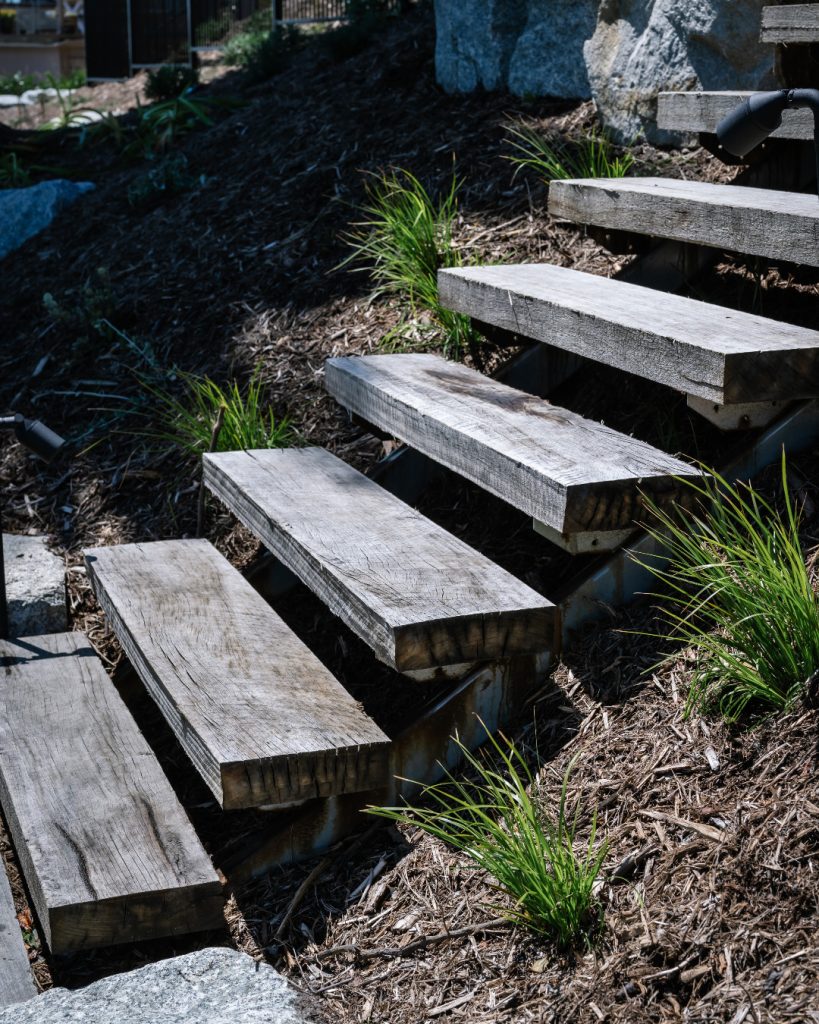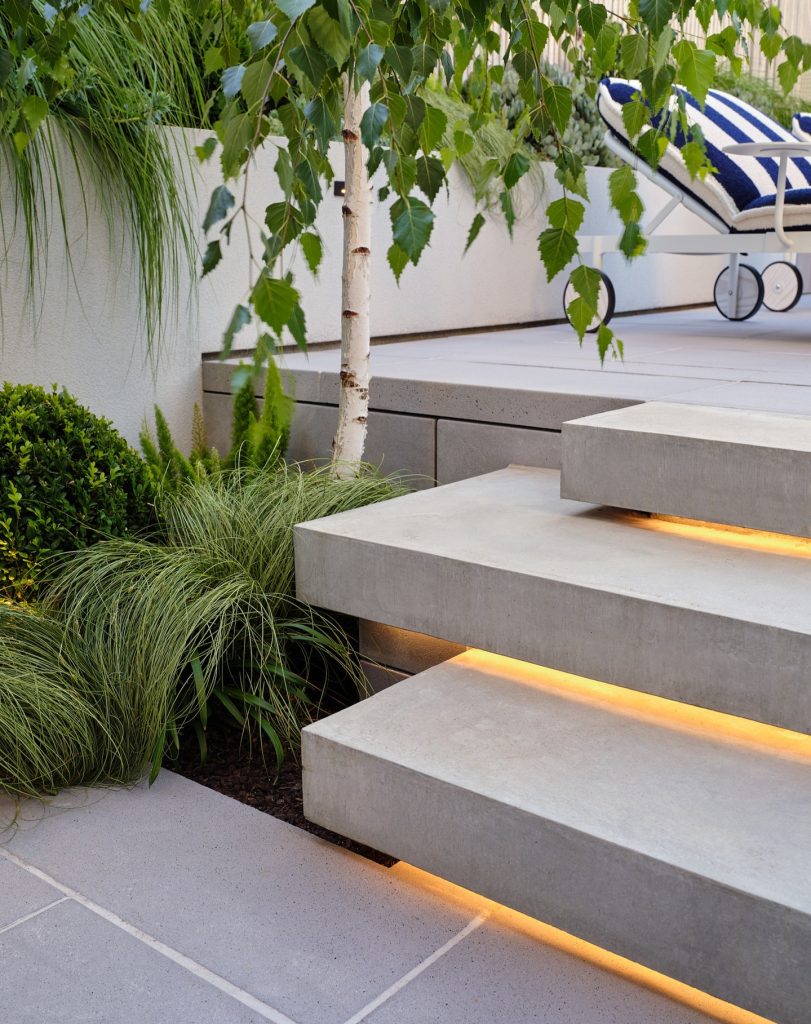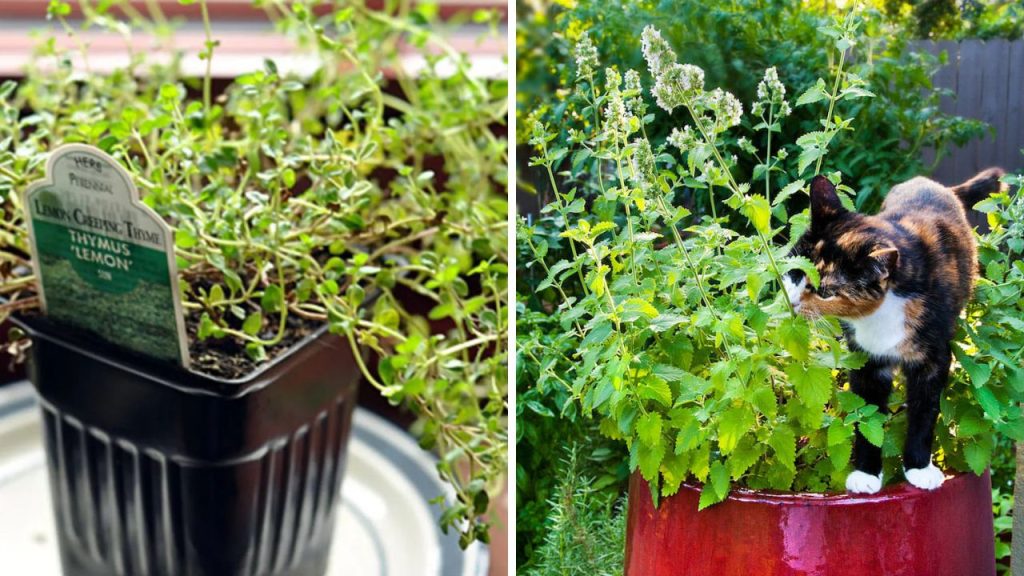Creating a dreamy, functional garden often starts with structure—and few features offer both beauty and purpose quite like garden stairs. Whether you’re connecting different elevations in your yard or simply adding charm to a slope, the right stair design can bring personality, ease of access, and a polished finish to your outdoor space.
In this article, we’ll explore 15 gorgeous garden stairs ideas tailored to spark inspiration and guide you in transforming your backyard into a space that’s not only functional but full of character. From rustic charm to sleek modern appeal, each idea is designed to enhance your outdoor living experience while blending beautifully with your existing landscape.
Let’s step into it!
1. Natural Stone Steps

There’s something undeniably grounding about natural stone in the garden. Whether it’s limestone, sandstone, or slate, stone steps bring a timeless, earthy vibe that fits seamlessly into nearly any outdoor setting.
Natural stone stairs are incredibly durable, weather-resistant, and low-maintenance. Each stone is unique, giving your garden a custom look that feels organic and luxurious. These steps are perfect for sloped backyards, allowing you to navigate your garden with ease while adding visual interest.
The irregularity of natural stones works beautifully with lush greenery and cottage-style planting. You can surround the steps with creeping thyme or low-profile ground covers to soften the look and add a touch of color and fragrance. Plus, pairing these steps with modern patio furniture on your landing or back porch adds an elegant contrast between rustic and refined.
If you’re after back porch decor that connects with nature while remaining practical, this is a solid—literally and figuratively—choice.
2. Railroad Tie Garden Stairs

Rustic and full of character, railroad tie stairs are a go-to for homeowners seeking a sturdy, cost-effective solution with a rugged edge. Typically made from treated timber or reclaimed wood, these stairs look especially stunning in wooded or cottage-style backyards.
Railroad ties are great for uneven terrain and sloped yards. You can create steps by cutting ties into uniform sections, anchoring them into the slope with rebar or spikes, and backfilling with gravel or soil. The dark wood tones pair well with natural stone borders or bright green foliage.
For added durability and longevity, make sure to use rot-resistant wood or consider sealed, recycled materials. You can also line the edges with solar lights to enhance safety and add ambiance during evening gatherings.
This style of stairs offers a casual, natural vibe that works beautifully alongside modern back porch ideas where nature meets functionality. It’s an excellent way to blend rustic aesthetics with smart design.
3. Concrete Garden Stairs with Sleek Edging

Concrete stairs have come a long way from their basic utilitarian roots. With today’s design-forward mindset, concrete garden stairs can be sleek, modern, and downright stylish.
This option is perfect if you’re after a clean, minimalist look that complements modern patio furniture and streamlined back porch decor. The smooth, consistent finish of concrete pairs beautifully with geometric landscaping and low-maintenance plants like ornamental grasses or succulents.
To enhance visual appeal, consider adding metal edging or wood trims for contrast. You can also integrate lighting directly into the sides of the stairs or use LED strips beneath each tread for a soft glow after sunset.
Aside from aesthetics, concrete stairs are durable and require minimal upkeep, making them ideal for busy households. Whether you’re working with a small patio area or connecting multi-level zones in your yard, concrete stairs bring structure and elegance to your outdoor living setup.
4. Brick Garden Steps with Vintage Charm

Brick stairs are a classic for a reason. Their warm tones and charming textures create a welcoming atmosphere that complements traditional, farmhouse, and English garden styles alike.
These steps work well with lush plantings—think hydrangeas, lavender, or boxwood borders. The worn-in look of aged bricks adds instant character, especially when framed by wrought iron railings or natural stone walls.
Brick is also incredibly durable, though it may require occasional maintenance such as repointing or sealing. If you want more grip, opt for textured brick or a herringbone pattern for both function and flair.
This is a great option if you want to create an old-world vibe or add a sense of heritage to your modern backyard layout. Pair these stairs with a vintage bench or rustic planters to bridge the old with the new in a cohesive way.
5. Floating Wood Steps Over Gravel
Source
One of the more contemporary takes on garden stairs, floating wood steps are both minimalist and visually intriguing. These steps typically consist of timber planks set on concealed risers or steel supports, giving the illusion that the steps are hovering above the ground.
They work particularly well over gravel beds or river rock, where the contrast between warm wood and cool stone adds depth and texture. This style is ideal for a modern back porch setting, especially if you’re working with angular architecture or want a clean, airy flow through your garden.
Floating stairs are also practical for drainage since water flows freely between the open steps. Use cedar, redwood, or pressure-treated lumber for durability, and seal regularly to preserve color and resist rot.
If you’re after garden stairs that blend seamlessly with outdoor living while making a stylish statement, this is your match.
6. Flagstone Steps with Moss Fillers
Source
Flagstone stairs evoke an enchanting, storybook-like vibe—perfect for gardens where whimsy and nature go hand-in-hand. The irregular shapes of the stones and the soft, muted tones create a relaxed, almost magical aesthetic.
These stairs are best for gentle slopes and can be laid directly into the earth or mortared for extra stability. What really makes them shine is what’s in between—consider planting moss, creeping thyme, or baby’s tears between each step for a touch of softness and a splash of green.
Flagstone steps pair beautifully with winding garden paths, water features, and forest-inspired landscaping. They’re ideal for forestcore or romantic cottage-style backyards, adding texture and interest while blending organically into the surroundings.
Use this design to enhance the charm of a shaded back porch area or lead the way to a cozy garden nook with modern patio furniture tucked beneath the trees.
7. Gravel and Timber Combo Stairs
Source
Combining gravel and timber is an excellent choice for gardeners who want to strike a balance between rustic and refined. This combo creates natural-looking stairs that are easy to install and budget-friendly.
Typically, wood planks (often pressure-treated or composite) are used to form the risers, while the treads are filled with compacted gravel or decomposed granite. This design allows for water permeability and reduces the risk of slipping when compared to slicker materials.
To elevate the look, consider using clean-edged wood and contrasting white or light gravel. This creates a crisp, modern back porch aesthetic that works well in transitional and contemporary outdoor living setups.
These stairs are ideal for long slopes or terraced yards and can be customized in both width and depth to suit your space. Plus, they’re low-maintenance and offer a great return on investment for improving access and style simultaneously.
8. Spiral Staircase in the Garden
Source
Want to make a dramatic, vertical statement? A spiral staircase can be a functional work of art in your backyard. Whether you’re connecting a back porch to a lower patio or leading up to a rooftop garden, spiral stairs maximize space while adding a sculptural element.
These stairs are often made of wrought iron, steel, or powder-coated aluminum—making them both sturdy and stylish. You can enhance the look with vines or climbing roses wrapped around the railing or choose a bold color for a contemporary twist.
Spiral staircases are great for modern outdoor living where you need vertical access without taking up a large footprint. While they may not be suitable for every mobility need, they’re perfect for design enthusiasts looking to add elegance and efficiency.
Pair one with clean-lined modern patio furniture or a cozy pergola setup to turn your garden into a magazine-worthy oasis.
9. Gabion Retaining Wall Stairs
Source
Gabion stairs bring a rugged, industrial flair to the garden with their unique construction. These steps are typically made using wire cages filled with rocks or stones, forming a solid structure that can also act as a retaining wall on sloped terrain.
What’s great about gabion-style garden stairs is their strength and drainage. They’re perfect for steep yards or areas prone to erosion. The open design of the cages allows water to pass through, making them a durable option that doesn’t compromise on style.
To soften the look, plant grasses, sedums, or trailing plants along the edges. You can also pair them with warm wood treads for a contrast that leans modern and polished.
Gabion stairs are a fantastic fit for backyards embracing contemporary, rustic, or even boho themes. They tie in beautifully with bold back porch decor and other industrial elements like metal planters or steel-framed pergolas.
10. Stepping Stones with Ground Cover
Source
Looking for a casual, free-flowing option that doesn’t feel too structured? Stepping stone stairs are perfect for gently sloped gardens where you want to preserve a natural, meandering flow.
These stairs consist of large, flat stones placed a step apart, often interspersed with ground covers like moss, creeping thyme, or Irish moss. The result is a soft, green staircase that practically melts into the landscape.
Stepping stones are ideal for cottage gardens, woodland settings, or minimalist yards where simplicity is key. They’re low-impact and don’t require much excavation, making them great for DIY installations.
Pair this staircase style with cozy outdoor seating, wicker furniture, or vintage lighting for a charming outdoor living experience that feels both curated and effortless. It’s a subtle but effective way to guide the eye and the foot through your garden sanctuary.
11. Reclaimed Wood Steps with Gravel Infill
Source
Sustainable, stylish, and full of charm—reclaimed wood steps are a standout choice for the eco-conscious gardener. These stairs make use of salvaged wood, such as barn beams or repurposed decking, giving new life to old materials and creating a look that’s loaded with character.
Reclaimed wood pairs beautifully with gravel infill between each tread. Not only does the gravel add contrast and improve drainage, but it also reduces slipping and adds texture underfoot. The weathered wood creates a cozy, welcoming vibe that complements both traditional cottage gardens and more modern back porch decor schemes.
This combination looks particularly lovely when framed with lush greenery or placed alongside steel planter boxes for a rustic-meets-industrial aesthetic. Lighting can be subtly added under each tread or with solar path markers for evening ambiance.
If you’re looking for outdoor living solutions that are environmentally friendly without sacrificing design, this stair style is a perfect fit. It’s a wonderful blend of nature, texture, and conscious craftsmanship.
12. Stamped Concrete Garden Steps
Source
Stamped concrete steps are a great way to combine durability with high-end style. With the ability to mimic natural stone, brick, tile, or even wood, stamped concrete provides the look you want at a fraction of the cost and maintenance.
These steps can be custom-colored and patterned to match your modern patio furniture, outdoor kitchen, or even your back porch decor. Choose a neutral stone pattern for a timeless look or go bold with geometric prints and two-tone finishes for a more contemporary feel.
One major benefit is how long-lasting and slip-resistant they are—especially if you apply a non-slip sealer. You can also incorporate lighting directly into the concrete or add a brushed finish to the edges for added grip.
This stair style is ideal for homeowners who want the elegance of natural materials but with the budget-friendliness and practicality of concrete. It’s also perfect for tying together multiple areas of your outdoor living space in a cohesive, visually appealing way.
13. Stone Slab Steps with Planter Pockets
Source
Stone slab steps with built-in planter pockets are a creative and visually striking option for the avid gardener. These stairs are typically made from large stone slabs—granite, bluestone, or even travertine—and designed with intentional gaps or spaces between steps for planting flowers or ground covers.
The result is a beautifully layered staircase that looks as if it’s blooming right out of the hillside. It’s an excellent choice for sloped gardens where you want to soften the look of hardscaping while highlighting your favorite flora.
Choose low-growing plants like sedum, creeping jenny, or trailing petunias that spill gently over the edges. This living staircase adds seasonal interest, enhances biodiversity, and creates a calming, natural feel throughout the garden.
Stone slab steps work well alongside wood or wicker furniture and can be used to link different zones of a modern back porch or terraced backyard. They’re a unique way to blend hardscape and softscape in perfect harmony.
14. Multi-Level Deck Stairs
Source
If your garden features a tiered layout or steep drop, multi-level deck stairs may be the perfect solution. These are typically built with pressure-treated lumber or composite decking, connecting two or more outdoor living spaces with platforms and short flights of stairs.
Multi-level stairs are great for breaking up long slopes while offering natural resting points or mini patios. Each landing can double as a display area for container gardens, lanterns, or modern patio furniture.
You can customize the railings to suit your style—opt for sleek metal for a modern look or classic wood for a more traditional finish. LED lights built into the risers or steps can also enhance nighttime use and safety.
What’s lovely about this idea is how it adds both functionality and elegance. These stairs are perfect for connecting your back porch to the lawn, a fire pit area, or even a detached garden shed. The design options are nearly limitless, making it a strong choice for a versatile, attractive staircase solution.
15. Mosaic Tile Garden Steps
Source
For a bold, artistic touch, consider mosaic tile stairs. These colorful, patterned steps turn your garden staircase into a showpiece, adding a splash of personality and creativity to any outdoor space.
Mosaic tiles can be made from ceramic, porcelain, glass, or even broken pottery. You can create intricate patterns, simple geometric shapes, or personalized designs that reflect your style. This stair option works wonderfully as a DIY project for crafty homeowners or can be commissioned for a one-of-a-kind look.
In terms of placement, these stairs shine in entryways, near patios, or alongside vibrant flower beds. They’re especially stunning when used as a focal point—think of them as functional artwork for your outdoor living setup.
To balance the visual intensity, pair with neutral-toned modern patio furniture or minimalist decor on your back porch. These steps are also surprisingly durable when sealed correctly and can last for many years with basic maintenance.
If you want your garden to make a lasting impression, mosaic tile stairs are a fantastic choice.
Conclusion: Designing a Garden That Flows as Beautifully as It Functions
When it comes to enhancing your outdoor living space, garden stairs offer much more than a way to get from point A to point B. They’re a design feature that combines form, function, and flair.
Whether you’re leaning into rustic charm with railroad ties and mossy stone paths or going sleek and modern with concrete slabs and floating wood, the right staircase will complement your yard’s layout while adding visual interest and safety. They can also serve as stylish transitions between patios, garden beds, and back porch zones—blending your home’s interior aesthetic with the great outdoors.
Consider how your chosen stairs interact with other design elements like furniture, lighting, and greenery. With thoughtful planning, your garden stairs can become the star of the show—or the subtle guide that brings harmony to your landscape.
Now it’s your turn to elevate your space—one step at a time.

